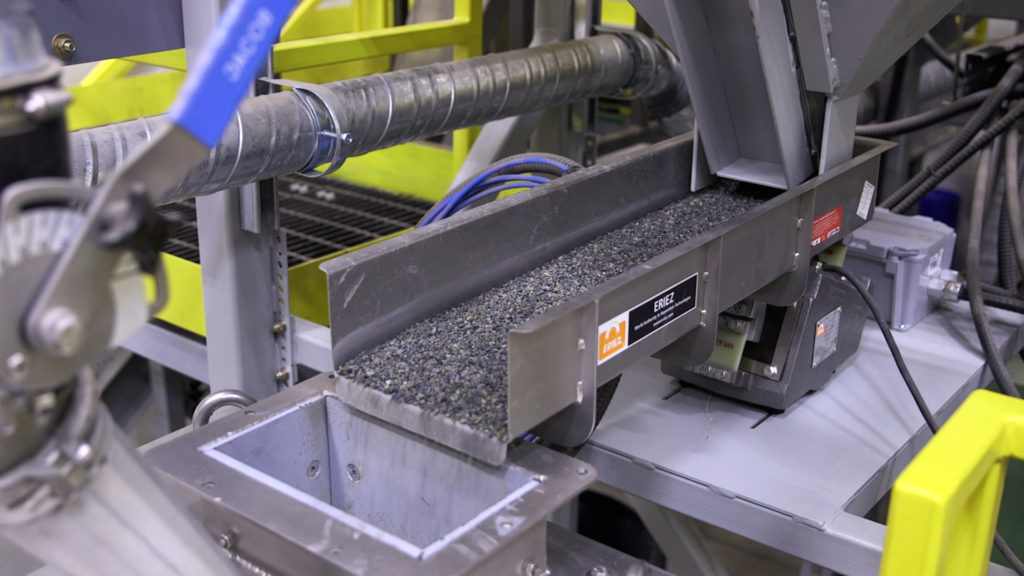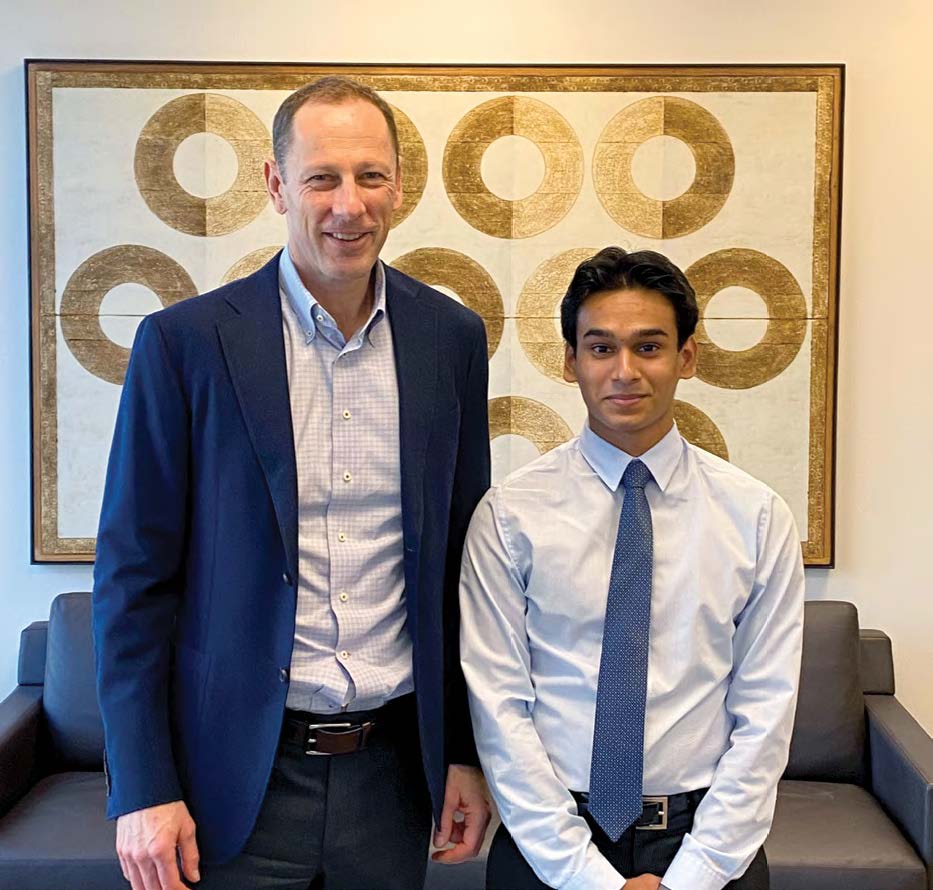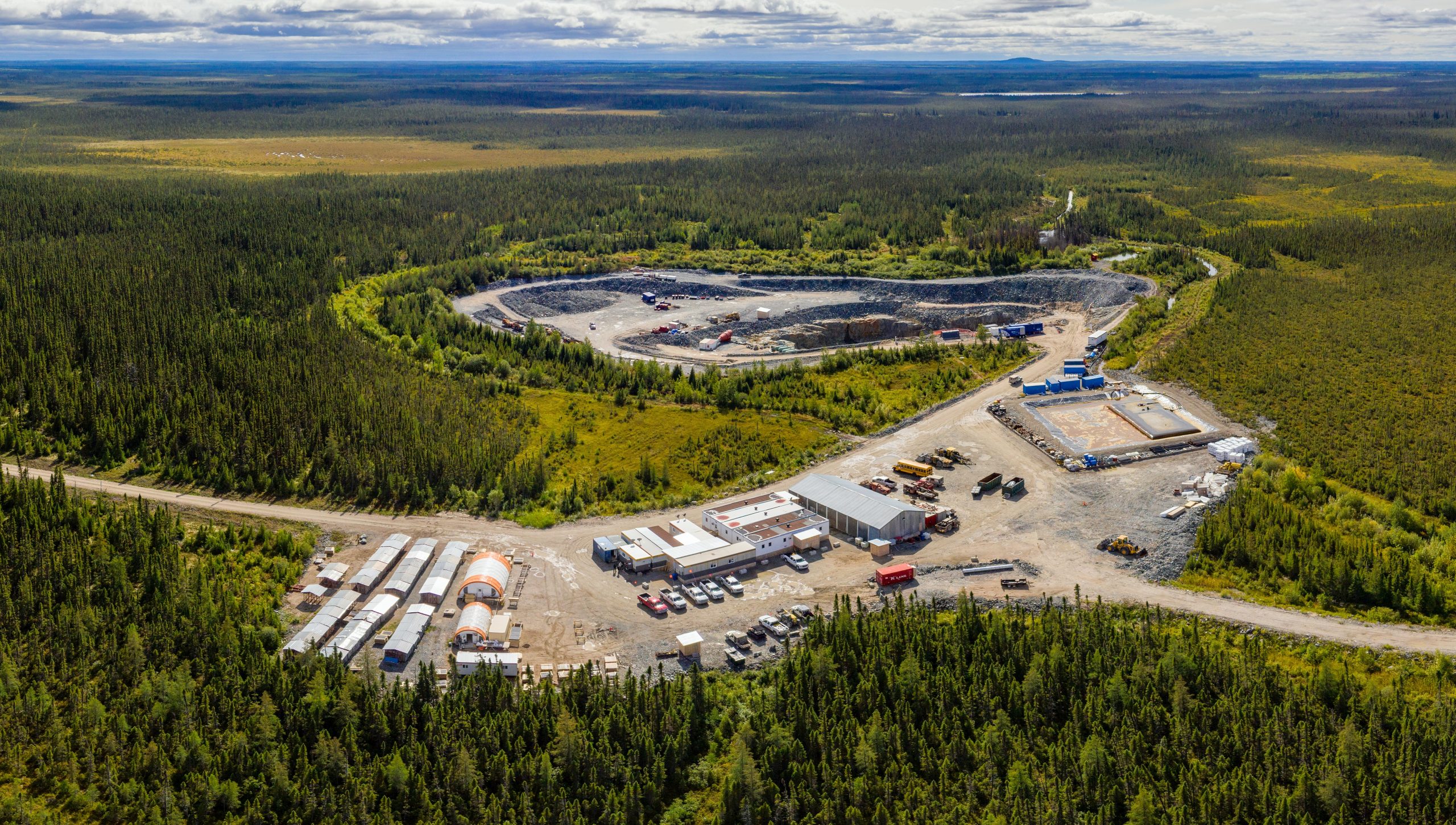“Sensor-based sorting is a reliable and efficient way to upgrade or remove waste from further downstream processing,” she says. “If you can reduce the amount of material going to the mill, that reduces energy costs and tailings at the back end of the process.”
Particle sorting (also called ore sorting) separates coarse ore particles (10-100 mm in width) using sensors and mechanical separation using air ejectors. Whereas bulk sorting detects the characteristics of whole ore particle parcels and can then separate these parcels from each other with a range of separation techniques, such as deviation of a conveyed feed on a belt.
While there is a variety of technical options to choose from, the SRC can help mining companies navigate their sorting options by offering technological insight and processing expertise based on its 75 years of service to the mining industry.
SRC also helps companies navigate the test work needed to identify and optimize sorting applications. Based on the need for common test work methodology, SRC is at the forefront of developing standardized methods to assist companies and consulting companies with this.
Long history of sorting technologies
SBS technologies have been in use for nearly 100 years, and go back to 1926 when American inventor Andrew Sweet first filed a patent for technologies that could separate ores using sensitive sensors. They picked up changes in colour or the amount of light reflected from different minerals and metals.
Over the past decades, advances in SBS technologies have rapidly commercialized, increasing the speed and accuracy at which sensor data is processed. This has enabled near real-time and automated separation and has made it a valuable tool for the mining industry.
SRC’s Diamond Laboratory has been using sensor-based technologies like luminescent sorting for decades. Over the past few years, the lab has adopted X-Ray transmission (XRT) sorting technologies, which sort minerals by their unique atomic signatures.
Centralized source for sorting services
SRC has designed a testing regime to assist industry clients with choosing the right SBS technology for their needs. The regime starts with sensor-based mineral characterization, then targeting and modelling, and finishes with pilot-scale testing.
“We provide geochemical and mineralogical data for mining and exploration companies for many different commodities, such as uranium, gold, base metals, potash and rare earths,” says Rob Millar, manager of SRC Geoanalytical Laboratories.
SRC’s full suite of minerals liberation sorting services is based on expertise and technologies from across its facilities, such as SRC Geoanalytical Laboratories, Diamond Laboratory and Minerals Processing. This creates a “one-stop-shop” that serves a mining company’s sorting needs for any ore sorting technology.
Stage 1: Sensor-based mineralogical characterization
In the first stage, a specialized sensor-based mineralogical characterization service assesses the type of technology and the amenability of ores to SBS technologies, based on the specific mineralogical characteristics of each ore. This allows companies to determine the optimal sensor technology at the optimal size and the information will eventually lead into modelling and total circuit design for processing these ores.
“Mineral characterization is the process of identifying, measuring and quantifying a mineral’s response to different sensors,” says Jane Danoczi, a senior process engineer in SRC’s Mining and Energy Division. “With that information, you can identify what sensors will work with what ore.”
The distinct physical and chemical compositions of ore elicit different responses from different sensors, so a strong understanding of individual ore mineralogy is crucial to the successful adoption of SBS technology.
It is not only important to understand the mineralogy and sample grades, but also the textures of these minerals, the volumetric proportion of the minerals relative to others at different sizes and the levels of dissemination and whether they are heterogenous at certain size fractions and can be sorted.
“With sensor-based sorting, you have to look at each fragment or particle and its complexity to see how to sort, but now we have a metric that can quantify this complexity and predict how it will respond to a sensor,” Danoczi says.
Using the trademarked Homogeneity Factor method developed by Danoczi’s team, the sortability at different size fractions by different sensors can more rigorously be determined in a methodological way.
This unique method assesses a particle’s complexity by rating it on a scale between positive 100 and negative 100. The higher the value, the easier the ore particle is to identify and sort. A low value like -90, for example, means the fragment is not homogenous with respect to the target mineral assemblage and will be more difficult for the sensor to sort.
These results lead to potentially different sorting options – based on different target minerals (not only desired metal, but also waste or associated minerals) – that can be successfully detected by sensors at sortable size ranges.
Stage 2: Targeting and modelling
The next stage — targeting and modelling — helps clients decide on a desirable sorting strategy (i.e., which mineral, which size and which sensor) and then create a semi-empirical model with sorter data and start scaling up the test work to develop.
Clients can use the valuable modelling information to test out various scenarios in the design phase for their operation. The model is developed by SRC experts through sorting first and includes inspection tests, models and algorithms.
Stage 3: Pilot testing
The final stage — pilot testing — allows clients to obtain refined algorithms and an understanding of sorting yields and recoveries, as well as general performance of the full circuit. This phase is important in determining the feasibility and capital costs of a sorting project.
An interdisciplinary approach for reliable results
SBS technologies rely on the integration and cooperation of many specialties, including geologists, mineralogists, physicists, minerals processing engineers and chemists, and specialists in algorithm development and artificial intelligence.
The complexity of SBS brings some challenges to the table, including how it can be used at mines.
Danoczi says that with declining ore grades and more complex mineralogy, industry is starting to recognize the potential of SBS, which reduces energy and reagent requirements as well as overall carbon footprints.
“Clients are seeing the necessity for sensor-based sorting to actually get their ore out of the ground or stockpiles and process it efficiently,” Danoczi says.
“With sensor-based sorting you benefit both the mines and the planet.”
The preceding Joint Venture Article is PROMOTED CONTENT sponsored by the Saskatchewan Research Council and produced in co-operation with The Northern Miner. Visit: www.src.sk.ca for more information.




